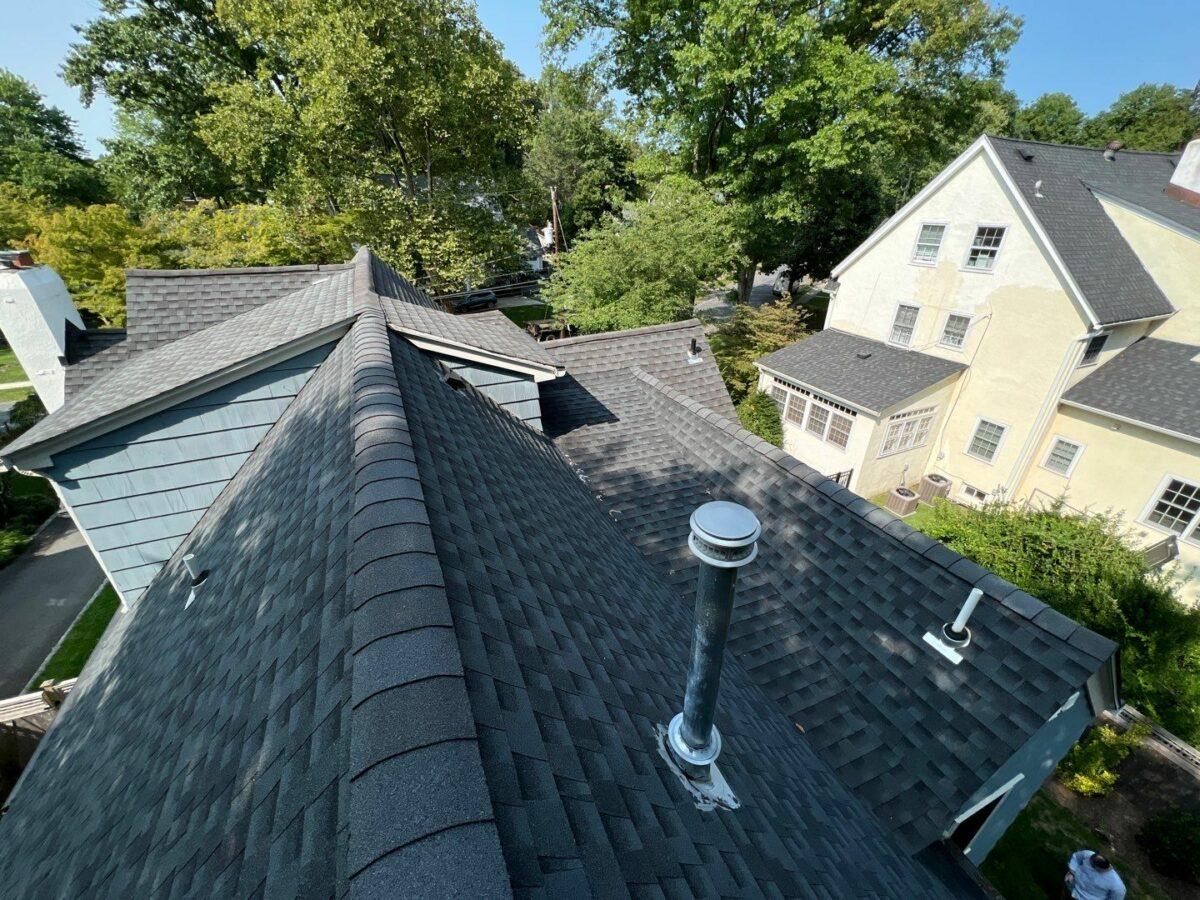Thermal cracking or splitting is a common problem with roofing shingles that feature fiberglass. Cracks and splits occur in fiberglass-based roofing shingles of all types. The difference between a crack and a split is that a crack occurs only on the surface of the shingle’s asphalt layer, whereas a split goes all the way through the shingle.
Cracks may also refer to creases that occur on the asphalt surface due to wind. These creases don’t run through the entire shingle. The most common types of thermal split patterns are diagonal and vertical splits.
Cracks and splits occur as a result of the expansion and contraction of roofing shingles due to changes in temperature. This article discusses the causes of thermal cracking and splitting in roofing shingles.
But first, here’s a quick overview of a typical roofing assembly to help you understand thermal cracking and splitting.
Standard Roofing Assembly
Roofing systems with shingles feature two distinct assemblies. The first one consists of roofing sheathing attached to roof framing components, such as trusses, rafters, blocking and ridges. All these components form the roof deck, which is considered a single assembly. The second assembly consists of the shingles attached to each other to form a continuous roofing surface.
Causes of Thermal Cracking and Splitting in Roofing Shingles
Some shingles crack and split because the manufacturer failed to meet the tear resistance ASTM standards. However, shingles that meet ASTM standards may split because the standards fail to address certain defects.
The following are common causes of thermal cracking and splitting of shingles.
- The fiberglass substrate is too thin, making the shingles prone to tears because the fiberglass mat is weak.
- The fiberglass mat doesn’t have enough asphalt, making it brittle following extensive sun exposure.
- The bonding adhesive meant to prevent wind uplift is too strong, making the shingles a continuous surface prone to tears because it lacks enough flexibility to withstand large temperature changes.
- Extreme climate change results in large temperature fluctuations that cause tears due to intermittent expansion and contraction.
- Incorrect placement or nailing of shingles, causing or worsening thermal cracks and splits.
Damage tends to occur on the corners, rather than the middle, of strip or laminate shingles. As the large membrane of glued-together roofing cools, it contracts. The points at which the end butts of the shingles meet are the most prone to cracking as this is where movement naturally occurs.
Shingle roofing for which the end butts have a laddered pattern is more susceptible to cracks and splits than shingle roofing with staggered end butts. Laddering makes shingles more prone to thermal cracking because separation points naturally occur throughout the roof surface.
This is among the reasons why many roofing experts and manufacturers don’t recommend a laddered pattern. However, that is not to say that end-butts with a staggered pattern are immune to thermal cracking. Many staggered roofing shingles exhibit similar tearing.
Professional Roofing Installation, Maintenance, and Repair
Temperature fluctuations cause the expansion and contraction of the shingles, resulting in thermal cracking and splitting. Proper installation and maintenance can minimize this problem. When it occurs, call a roofing professional to inspect and advise you on the best solution. Visit Novalis Roofing and Siding to learn more about roofing shingles.



